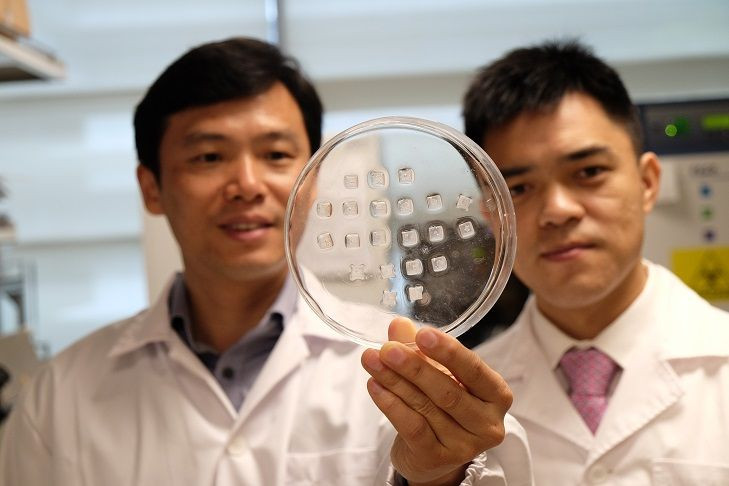Want To Lose Weight? Stab Yourself With Hundreds Of Needles

A future cure for obesity could be stabbing fat with hundreds of tiny needles containing medicine that burns the fat into energy.
Scientists reported the new strategy, which has been tested out on mice, that involves inserting the needles through a patch, according to the journal Small Methods. The microneedles detach from the patch once they are embedded in fatty tissue, according to the study, and then slowly dissolve, releasing drugs that transform the fat.
The medication turns the type of energy-storing fat tissue called white fat into the kind that burns up into energy, known as brown fat.
“Brown fats are found in babies and they help to keep the baby warm by burning energy,” Nanyang Technological University in Singapore explained. “As humans grow older, the amount of brown fats lessens and is replaced with visceral white fats.”
The microneedle patches that were tested on the lab mice were loaded up with anti-obesity drugs previously shown to convert white fat into brown fat. Those treated rodents did not gain as much weight on their high-fat diets as other mice. In addition to reducing their overall fat mass, the treated mice had lower levels of cholesterol and fatty acids.
“With the embedded microneedles in the skin of the mice, the surrounding fats started browning in five days, which helped to increase the energy expenditure of the mice, leading to a reduction in body fat gain,” researcher Xu Chenjie said in the Nanyang statement. “The amount of drugs we used in the patch is much less than those used in oral medication or an injected dose. This lowers the drug ingredient costs while our slow-release design minimizes its side effects.”
Although obesity-fighting compounds are not new, the study notes that they “lose effectiveness or/and cause severe side-effects while being delivered via conventional routes” like an oral medication.
The patch is held on the skin for a couple minutes and then removed, leaving the microneedles inside the skin. The study calls it a “painless and bloodless drug delivery” to the white fat tissue underneath the skin.
Because the needles dissolve and release their medication slowly, the method does not have to be administered daily. It is also something that potentially can be done at home.
More than one in three adults in the United States is obese, according to statistics from the Centers for Disease Control and Prevention. Obesity is linked to medical conditions like heart disease, diabetes, certain cancers and stroke, making it a significant health risk.
“What we aim to develop is a painless patch that everyone could use easily, is unobtrusive and yet affordable,” researcher Chen Peng said in the statement. “Most importantly, our solution aims to use a person’s own body fats to burn more energy, which is a natural process in babies.”
© Copyright IBTimes 2025. All rights reserved.




















